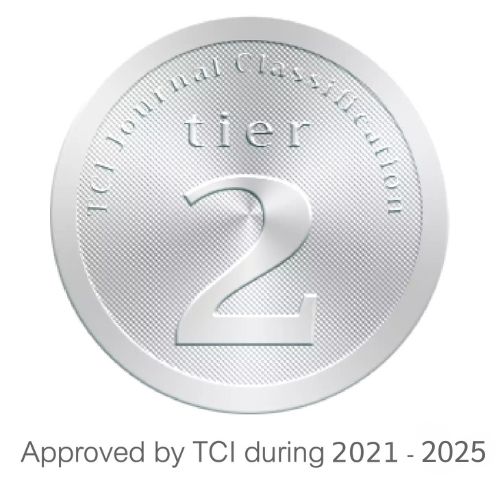การประยุกต์ใช้ทฤษฎีพฤติกรรมตามแผนเพื่อสร้างความได้เปรียบ ทางการแข่งขันในธุรกิจสายการบินผ่านกิจกรรมการสื่อสาร แบบปากต่อปากบนเครือข่ายอินเตอร์เน็ต
Implementation of the Theory of Planned Behaviorto Create a Competitive Advantage in the AirlineBusiness through the Activities of ElectronicWord-of-Mouth (eWOM)
Keywords:
การสื่อสารแบบปากต่อปากบนเครือข่ายอินเตอร์เน็ต, ทฤษฎีพฤติกรรมตามแผน, ความได้เปรียบเชิงการแข่งขันAbstract
การสื่อสารแบบปากต่อปากบนเครือข่ายอินเตอร์เน็ตถือเป็นส่วนหนึ่งของช่องทางการสื่อสารที่สำคัญในยุคดิจิตอล ซึ่งสามารถนำมาใช้ประโยชน์เพื่อพัฒนาธุรกิจสายการบิน เนื่องจากช่องทางดังกล่าวมีอิทธิพลต่อความตั้งใจซื้อ และพฤติกรรมการซื้อสินค้าและบริการของผู้โดยสาร นอกจากนี้ทฤษฎีพฤติกรรมตามแผนถูกนำมาประยุกต์ใช้เพื่ออธิบายถึงปัจจัยที่มีอิทธิพลต่อการสื่อสารแบบปากต่อปากบนเครือข่ายอินเตอร์เน็ตในการพัฒนาธุรกิจสายการบิน โดยปัจจัยสำคัญที่ส่งผลกระทบต่อการสื่อสารแบบปากต่อปากบนเครือข่ายอินเตอร์เน็ตในการพัฒนาธุรกิจสายการบินตามทฤษฎีพฤติกรรมตามแผน ได้แก่ ทัศนคติต่อการใช้บริการ อิทธิพลของกลุ่มอ้างอิง และการรับรู้ความสามารถในการควบคุมพฤติกรรมจากประสบการณ์ ดังนั้น หากสายการบินต้องการใช้ประโยชน์จากช่องทางการสื่อสารดังกล่าว เพื่อกระตุ้นความตั้งใจซื้อและเปลี่ยนแปลงพฤติกรรมการซื้อสินค้าและบริการของผู้โดยสาร ผ่านเครือข่ายอินเตอร์อย่างมีประสิทธิภาพ สายการบินควรนำทฤษฎีพฤติกรรมตามแผนมาใช้ประกอบเพื่อสร้างความได้เปรียบเชิงการแข่งขันในธุรกิจสายการบินReferences
Ajzen, I. (1991). The Theory of Planned Behavior. Organizational Behavior & Human Decision Processes, 50(2): 179-212.
Ajzen, I., and Driver, L. B. (1992). Application of the Theory of Planned Behavior to Leisure Choice. Journal of Leisure Research, 23(3): 207–224.
Bae, S.; & Lee, T. (2011). Gender Differences in Consumers’ Perception of OnlineConsumer Reviews. Electronic Commerce Research. 11(2): 201–214.
Beneke, J.; Mill, J.; Naidoo, K.; & Wickham, B. (2015). The Impact of Willingness to Engage in Negative Electronic Word-Of-Mouth on Brand Attitude: A Study of Airline Passengers in South Africa. Journal of Business and Retail Management Research. 9(2): 68–81.
Chen, C. H., Nguyen, B., Klaus, P., and Wu, M. S. (2015). Exploring Electronic Word-Of-Mouth (eWOM) In the Consumers Purchase Decision-Making Process: The Case of Online Holidays-Evidence from United Kingdom (UK) Consumers. Journal of Travel & Tourism Marketing, 32(8): 953–970.Danoa, M. (2018). How Singapore Airlines become the Most Iconic Airline Brand in Asia. Retrieved April 22, 2020, from http://www.referralcandy.com/blog/singapore-airlines-marketing-strategy/
Daugherty, T., & Hoffman, E. (2013). eWOM and the Importance of Capturing Consumer Attention within Social Media. Journal of Marketing Communications. 20: 82–102.
De Matos, C. A., & Rossi, C. A. V. (2008). Word-of-outh Communications in Marketing: A Meta-Analytic Review of the Antecedents and Moderators. Journal of the Academy of Marketing Science, 36(4): 578–596.
De Acedo Lizarraga, M. S.; de Acedo Baquedano, M. S.; & Cardelle-Elawar, M. (2007). Factors That Affect Decision Making: Gender and Age Differences. International Journal of Psychology and Psychological Therapy, 7(3): 381–391.
Elliott, C. (2016). Airline Passenger Complaints Soared Last Year. Retrieved 22 April 2020, from http://fortune.com/2016/02/18/airline-complaints-passengers/
Ishida, K.; Slevitch, L.; & Siamionava, K. (2016). The Effect of Traditional and Electronic Word-Of-Mouth on Destination Image: A Case of Vacation Tourists Visiting Branson,Missouri. Administrative Sciences, 6(12): 1–17.
Judge, M., Warren-Myers, G., & Paladino, A. (2019). Using the Theory of Planned Behaviorto Predict Intentions to Purchase Sustainable Housing. Journal of Cleaner Production, 215: 259–267.
Karimi, S. (2013). A Purchase Decision-Making Process Model of Online Consumers and Its Influential Factors A Cross Sector Analysis. Doctoral dissertation. Manchester: University of Manchester. Retrieved April 22, 2020, from https://www.research.manchester.ac.uk/portal/files/54532129/FULL_TEXT.PDF
Liao, Z.; & Cheung, T. M. (2001). Internet-based E-shopping and Consumer Attitudes: An Empirical Study. Information and Management, 38: 299–306.
Lin, M. (2013). Electronic Word-of-mouth on Microblogs: A Cross-cultural Content Analysis of Twitter and Weibo. International Communication Studies, 22(3): 18–38.
Nikookar, G., Rahrovy, E., Razi, S., & Ghassemi, R. A. (2015). Investigating Influential Factors on Word of Mouth in Service Industries: The Case of Iran Airline Company.Procedia - Social and Behavioral Sciences, 177: 217–222.
Ohman, W. (2017). Instagram Marketing: A Study about the Effect of Visual Content on Customer Engagement in the Airline Industry. Master thesis. Reykjavik:Reykjavik University. Retrieved April 22, 2020, from https://skemman.is/bitstream/1946/28664/1/MIB0617_Thesis_Wilhelm_%C3%96hman_Customer_Engagement_On_Instagram_The_Effet_Of_Visual_Content.pdf
Park, C., & Lee, T. M. (2009). Antecedents of Online Reviews’ Usage and Purchase Influence: An Empirical Comparison of U.S. And Korean Consumers. Journal of Interactive Marketing, 23(40): 32–340.
Rossmann, A.; Ranjan, K. R.; & Sugathan, P. (2016). Drivers of User Engagement in eWOM Communication. Journal of Services Marketing, 30(5): 541–553.
Rudolph, S. (2015). The Impact of Online Reviews on Customers’ Buying Decisions. Retrieved April 22, 2020, from http://www.business2community.com/infographics/impact-online-reviews-customers-buying-decisions-infographic-01280945#uJYIytwDmhG4Sv0m.9
Sweeney, J. C., Soutar, G. N., and Mazzarol, T. (2005). The Difference between Positive and Negative Word-Of-Mouth-Emotion as A Differentiator. Retrieved April 22, 2020, from https://cemi.com.au/sites/all/publications/3-Sweeney.pdf
Sparks, B. A., & Browning, V. (2011). The Impact of Online Reviews on Hotel Booking Intentions and Perception of Trust. Tourism and Management, 32(6): 1310–1323.
Weiser, E. B. (2000). Gender Differences in Internet Use Patterns and Internet Application Preferences: A Two-Sample Comparison. Cyber Psychology and Behavior, 3(2): 167–178.








